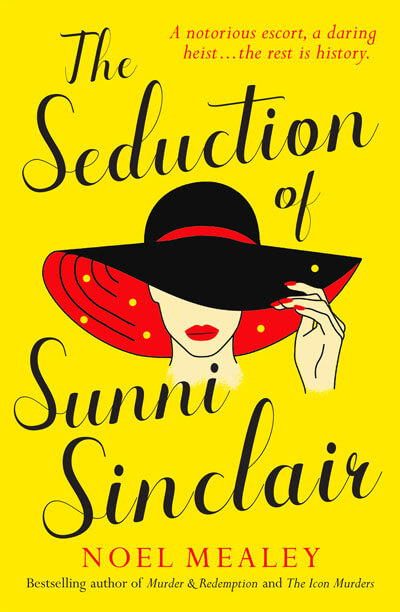
A World of Discoveries in a Fish Tank
Before the eagerly awaited release of her magical realistic Nullarbor Pearl, we asked author Sarah Rossetti some pointed questions.
1. The germ for the book was a short film, Pilbara Pearl. What elements from the film did you decide to expand in the book & why? And why did you change the locale from the Pilbara to the Nullarbor in the novel?
Nullarbor Pearl has a long development path, stemming from a poem I wrote, entitled “Nullarbor Pearl”, that is reprinted in the Foreword of the novel. From it came my short film script, Pilbara Pearl, as it was a sensible place to film my story, the Pilbara being closer than the Nullarbor for shooting. Contrasts were very important in the short film (free to purchasers of the novel) where the red dirt of the Pilbara met the aqua water in Pearl’s roadhouse fish tank. Pearl is Indigenous and Eddie is white. One (Eddie the pragmatist) wants to leave and Pearl (the dreamer) has to stay, causing friction, but, true to the romance genre, boy loses girl but manages to get girl back in ten minutes of screen time! To win her love, Eddie has to suspend disbelief in what Pearl says she sees in the fish tank. It’s a little love story in a big country then (in 1998) with Australia in the throes of the reconciliation debate. The film was very successful, screening on the big screen, domestic TV stations, international networks, Qantas international flights and winning a swag of awards. However, I always envisioned the story should be set on the Nullarbor Plain, as it is as far away from the ocean and Pearl’s curse/gift of seeing as she can get in the novel. Importantly, Eddie puts his head in the fish tank and sees what Pearl sees in the short film, but this ability had to go in the novel as it did not do justice to what I wanted to say about seeing in the longer narrative. What Pearl sees in the fish tank on the Nullarbor is precisely what holds people back in life, not that they are ready to hear it, at first, which soon gets her in hot water with the locals. As well as a love story, Nullarbor Pearl is about the search for identity, and the characters have to love themselves first to be truly capable of loving each other.

2. Magical realism is a mode that becomes increasingly important as the novel develops. What is there about life on the Nullarbor that makes it suitable material for a magical realistic treatment?
The novel is a mysterious magical realist narrative from the get go. Pearl seeing a scary spirit in the ocean cave off the Coogee cliffs in Chapter One sets the stage. In magical realism the bizarre is treated naturally. We see and accept what Pearl sees in the fish tank as real to her, so we are never in any doubt of its validity. Historically, desert pilgrimages are where seekers of identity go, which is seen not only in Pearl but also Massimo, her cave diver love interest, who is seeking to find himself in forgotten places. Eddie runs to the desert to escape his past demons, which he must address to be capable of love. At first, Pearl has bigger fish to chase than to fall in love with either of them. What is holding her up is not only being abandoned by her father as a twelve year old, but also, her pressing need to understand her curse/gift and what it is trying to reveal to her about her identity. The Nullarbor becomes a place where anything it possible, and it is a drawcard for the oddball misfits she encounters there, and ultimately assists. Historically, literary characters escape oppression via the genre of magical realism, which has its origins in the work of renown writers such as Gabriel Garcia Marquez. This genre is now present widely in Australian popular fiction, for example, in Trent Dalton’s Boy Swallows Universe, where its teen lead must deal with much that oppresses him. Thus, the magic in magical realism is not of the witchcraft variety, but rather a portal to greater understanding, a place characters enter in their minds when they are oppressed. In this sense, Pearl is no different.
3. Your main character, Pearl, is indigenous. How did you ensure that your treatment of her would be consistent with aspects of First Nations cultural protocols? How does Pearl’s relationship with her ancestors inform and affect her development and outlook as the novel proceeds?
Feisty, yet lovable teen, Pearl does not know that she is Indigenous for the first half of the novel, and what she believes is the curse of seeing helps her to understand that her ancestor, Great Grandma Pearl, is contemporaneously active in helping her to unravel the mystery that will ultimately save them both. As supporting Reconciliation was a primary aim for my writing the novel, Pearl’s mystery solving is handled gradually and with respect as it is important for me to pay homage to First Nations culture without delving into anything that would be considered to be secret. I googled all that I presented to ensure that what I had to say did not reveal any deeper content than what is already in the public domain. Essential to nurturing Reconciliation, I also needed to pay homage to the existence of far deeper learning in First Nations Culture than the novel reveals. It is my hope that the novel can help readers understand the importance of how First Nations folk who are lost to their culture can come to be embraced by its richness. Thus, all First Nations folk present in the narrative are handled with this in mind. Pearl comes to understand that her untrained-in-culture paintings, stemming from her gift and ultimately from her ancestor, fly in the face of traditional permission asking, hopefully prompting discussion about what white Australians need to know about Indigenous culture to better understand the circumstances of First Nations people. Pearl begins her journey as the most unlikely of heroines, but it embraces my hope that her growth prompts readers at large to understand some of the persistent issues underlying racial divisions, which sadly still exist in this country. The saying at the beginning of the novel – Don’t let misunderstandings ruin your life – is there to underscore the danger of misunderstandings, some of which I seek to address as a means to strengthen the move toward Reconciliation.
4. Pearl has two love interests in the novel. Which one ultimately works for her?
It is well known in literary circles that unresolved sexual tension holds a reader to read on like nothing else, so to reveal that would make me a spoiler. What I can say is that both love interest characters and Pearl, must learn how to love unconditionally to grow into their best selves. Each of them has much to learn, and Eddie and Massimo offer her dramatically different and competitively scintillating alternatives as the plot thickens.

5. Do you see this novel’s audience primarily for young adults or perhaps “new adult”?
In the ‘new adult’ genre, older teens are the central characters, which can appeal to young adults and adults alike, as seen in works like Tim Winton’s Breath and Blueback and all of Trent Dalton’s novels. The other characters in Nullarbor Pearl are older than Pearl, which may lead to older readers, as well as teens, to find much of interest in Nullarbor Pearl.
IP (Interactive Publications Pty Ltd)
David is a multi-award winning author and digital artist living in Brisbane, Australia. He's also CEO / Publisher at IP (Interactive Publications Pty Ltd), Australia's most innovative independent publisher












Comments (0)